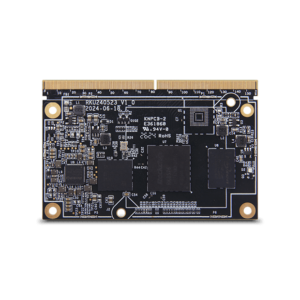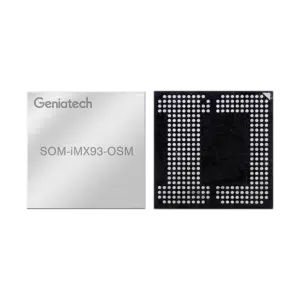Designing with Computer on Module: A Complete Guide for Developers
Designing with Computer on Module: A Complete Guide for Developers
Blog Article
The rapid development of engineering has driven significant inventions in stuck systems, one of which can be the imx8 system on module Working as a connection between custom electronics and off-the-shelf modules, the SoM is redefining how developers method embedded program design. That website shows the fundamental comprehension of a System on Element and their rising applications in various industries.

What's a Process on Element (SoM)?
A Process on Module (SoM) is a small, ready-to-use board that combines most of the primary components of something about the same module. That typically includes the model, memory, power management units, and sometimes extra peripherals like Wi-Fi or Ethernet. Unlike a traditional single-board computer, an SoM doesn't include connectors and software ports pre-installed, meaning it should be along with a copyright board to form an entire system.
Made to streamline progress workflows, the modular nature of an SoM allows designers to miss the intricate procedure for developing and assembling every person aspect from scratch. By adopting an SoM, companies may focus more on the application-specific functions of the products.
Advantages of Using Process on Module
The integration of a whole system on one element gifts several benefits. First, it considerably decreases the full time required for solution development. Pre-tested modules ensure stability, preserving weeks of work for engineering teams.
Also, the scalability of an SoM enables organizations to regulate performance degrees centered on project requirements. For example, a low-cost solution can very quickly scale into a high-end solution by changing the model in the element while preserving the service panel design. This approach reduces engineering dangers while marketing long-term cost-efficiency.
Finally, the consistency of an off-the-shelf module ensures high compatibility with present methods and frameworks, making it suitable for equally small startups and large enterprises seeking to hit the industry quickly.
Critical Purposes of SoM in Embedded Techniques
The use of System on Modules spans many high-demand industries including but not restricted to medical products, automation, and customer electronics.
Medical Products
Accuracy and reliability are paramount in healthcare. Process on Modules with protected processing abilities are embedded in screens, imaging devices, and lightweight diagnostic tools.
Professional Automation
Powerful and energy-efficient, an SoM is crucial for commercial get a handle on methods and autonomous robotics. Its scalable structure helps high-speed information processing and IoT connectivity.
IoT Units

Client items like clever thermostats, wearable products, and actually house personnel combine an ultra-compact Program on Module for seamless performance.
The Program on Component remains to gain grip because reduced complexity and versatility, cementing itself as a future-proof alternative in the embedded programs sphere. Industry leaders already are leveraging these adventures, and their scope is likely to develop further as engineering evolves.
Report this page